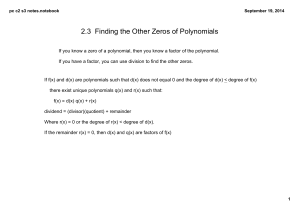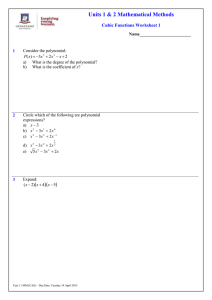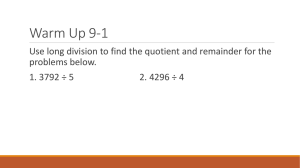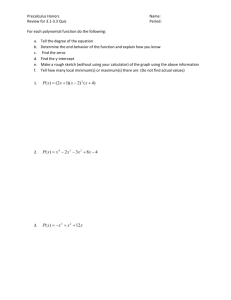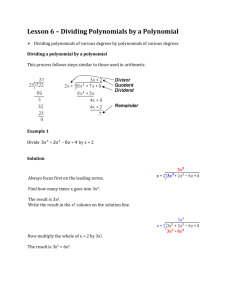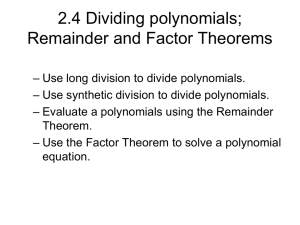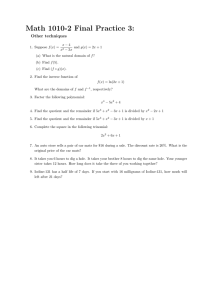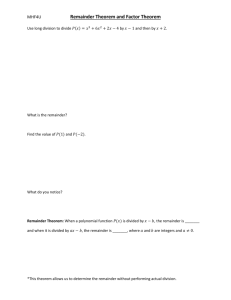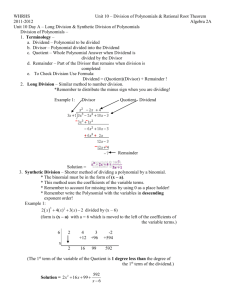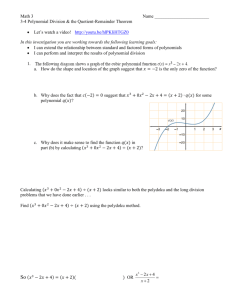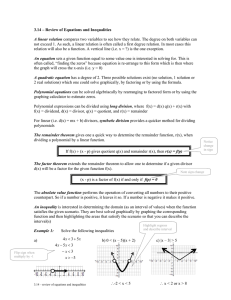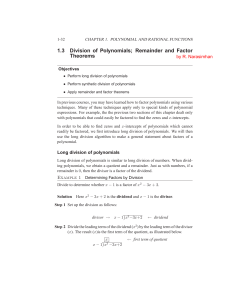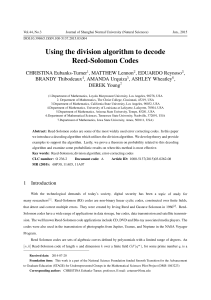Section 3.2: Polynomial Division Lecture 11 – Typeset by FoilTEX –
advertisement
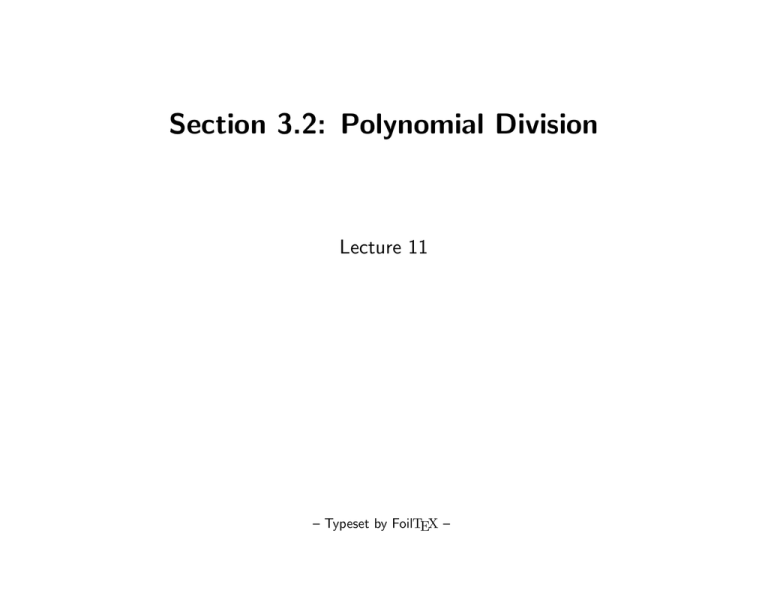
Section 3.2: Polynomial Division Lecture 11 – Typeset by FoilTEX – Outline 30 • Long Division of Polynomials 20 10 • Remainders and Factors -2 1 -1 -10 • Factors and Zeros f HxL = Hx + 2L Hx + 1L Hx - 1L Hx - 2L Hx - 3L -20 -30 2 3 Polynomial Division • The degree of a polynomial is its largest exponent. ∗ The degree of f (x) = x2 + x + 1 is 2. ∗ The degree of g(x) = x + x6 − x3 − 11 is 6. ∗ The degree of h(x) = 3 is 0. • Given two polynomials f (x) and p(x), we could divide f (x) by p(x). • We would find two polynomials, a quotient q(x) and a remainder r(x), such that f (x) = p(x)q(x) + r(x) and the degree of r(x) is less than the degree of p(x). Example Find the quotient q(x) and the remainder r(x) if f (x) = 3x4 + 2x3 − x2 − x − 6 is divided by p(x) = x2 + 1. Example Find the quotient q(x) and the remainder r(x) if f (x) = x6 + x5 − x − 1 is divided by p(x) = x5 − 1. Remainder and Factor Theorems • Remainder Theorem: When a polynomial f (x) is divided by p(x) = x − c, the remainder is r(x) = f (c). (Easy to find the remainder in this case.) ∗ f (x) = q(x)(x − c) + r(x) ∗ f (c) = q(c) · 0 + r(c) • Factor Theorem: For a polynomial f (x), x − c is a factor of f (x) if and only if f (c) = 0. • This is an x-intercept finder! Example • Show that c = 2 is a zero of f (x) = −12 + 4x + 15x2 − 5x3 − 3x4 + x5. • Divide f (x) by x − 2 (call the quotient q1(x)). • Show that c = 1 is a zero of q1(x). • Divide q1(x) by x − 1 (call the quotient q2(x)). • Show that c = −1 is a zero of q2(x). • Divide q2(x) by x + 1 • Factor f (x) completely.
